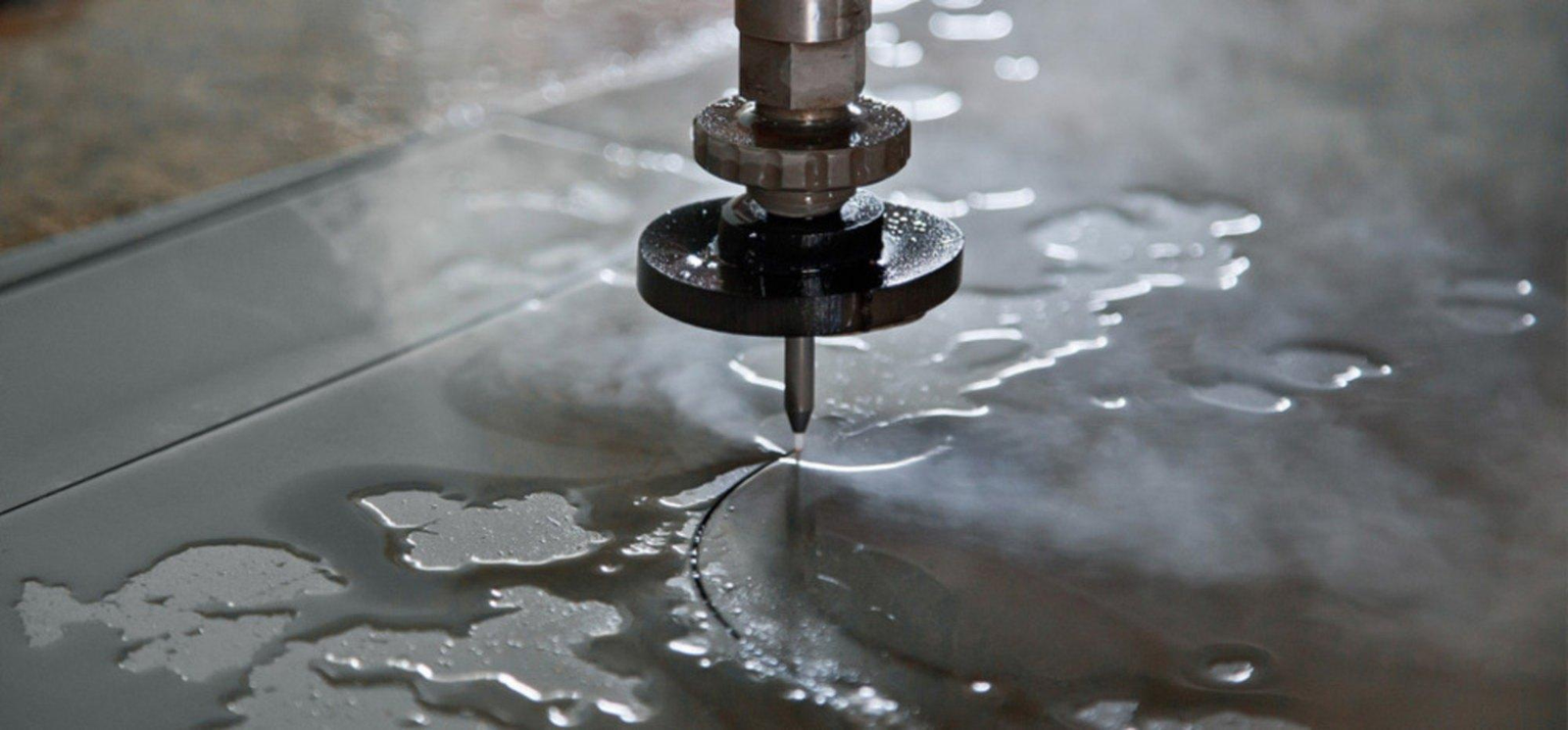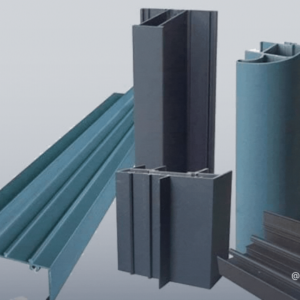El titanio es un metal relativamente ligero.. Es bastante duradero e ideal para un uso prolongado.. La gente se pregunta ¿El titanio es magnético?? Comprender las propiedades del titanio deja esto claro.. En esta guía, Echaremos un vistazo a las propiedades y aspectos magnéticos del titanio..
¿Es el titanio magnético en forma pura??
El grado puro de titanio No es ferromagnético en circunstancias normales.. Sin embargo, es paramagnético. En pocas palabras, es débilmente magnético. No permite una fuerte atracción magnética debido a la estructura atómica.. Varias aplicaciones requieren una característica no magnética, y el titanio parece ser una opción óptima.
Un vistazo a las propiedades del titanio
Echemos un vistazo a las propiedades del titanio.:
Atracción magnética débil
Como la mayoría de los metales, El titanio es un mal conductor del magnetismo.. es ligeramente paramagnético, sensible al magnetismo, o no influenciado por campos magnéticos. Esta propiedad hace que el titanio sea aplicable en diferentes industrias, desde la automotriz hasta la aeroespacial.. Es menos atractivo que la mayoría de los materiales ferromagnéticos como el hierro., y magnesio.
Falta de retención magnética
Una vez eliminado, El titanio no es capaz de retener su magnetismo.. Esta característica no retentiva es óptima para usos particulares.. No tiene características magnéticas tan altas como las de los materiales ferromagnéticos.. Entonces, Los aparatos electrónicos y médicos se pueden fabricar con precisión..
Alta relación resistencia-peso
El titanio tiene las mejores relaciones resistencia-peso.. Sin embargo, es liviano pero resistente y por lo tanto es altamente resistente. Estas características son cruciales en aquellos sectores que emplean material de calibre ligero pero resistente.. La baja densidad del metal evita que el titanio sea atraído por campos magnéticos..
¿Qué causa que el titanio no sea magnético??
La estructura atómica del titanio no permite la celebración de fuertes atracciones magnéticas.. Los electrones de los átomos de titanio tienen una distribución equilibrada.. Conduce a un bajo acoplamiento magnético.. Por lo tanto, actúa como un paramagnético. Desafortunadamente, a diferencia de los metales ferromagnéticos, El titanio no posee la alineación del dominio magnético.. Esta característica estructural establece sus características no magnéticas..
Factores que influyen en las propiedades no magnéticas del titanio
Algunos factores de influencia comunes incluyen:
Configuración de átomos y electrones
En la estructura atómica y configuración electrónica del titanio., hay pocas atracciones magnéticas.
Propiedades magnéticas e influencia de la temperatura.
El titanio responde ligeramente a los cambios de temperatura en relación con sus propiedades magnéticas.. A temperaturas más altas, El titanio se vuelve más débilmente paramagnético., y viceversa. Sin embargo, apenas es magnético a temperatura ambiente, acerca de 25 Grados Celsius.
Elementos de aleación
Las aleaciones de titanio también podrían contener distintos tipos de caracteres magnéticos.. Se pueden incorporar otros metales lo que afecta su magnetismo.. Por ejemplo, El aluminio titanio tiene una característica ligeramente magnética..
Superficies y Revestimientos
Varios procesos, incluyendo tratamientos superficiales como anodizado, puede afectar la calidad de la superficie. Sin embargo, todos estos cambios modifican la apariencia externa.
Defectos y cuerpos extraños en el titanio
Las características magnéticas del titanio dependen de las impurezas del material base.. También es posible que pequeñas cantidades de otros metales aporten una propiedad magnética diminuta.. Sin embargo, El titanio es mayoritariamente no magnético en la mayoría de los casos..
Presión y fuerzas externas
La alta presión influye moderadamente en las propiedades del titanio.. Sin embargo, La presión no afecta sustancialmente la característica no magnética del titanio.. Generalmente, Es lo mismo en circunstancias normales., en lo que respecta al comportamiento.
Aplicaciones del titanio en diversas industrias
Las aplicaciones más frecuentes del titanio incluyen:
Industria aeroespacial
El peso ligero y la resistencia del titanio lo convierten en un candidato perfecto para su uso en aviones.. Se aplica en componentes de aviones como alas y fuselajes.. Los productos son aleaciones de titanio de Boeing. 787 y componentes del Airbus A380.
Implantes Médicos
El titanio se emplea en operaciones como la sustitución de articulaciones.. Estos son implantes de cadera de DePuy Synthes y prótesis de rodilla de Stryker. La biocompatibilidad del titanio lo hace ideal para prótesis médicas y dispositivos implantables..
Equipo marino
El titanio encuentra una amplia aplicación en aplicaciones marinas debido a su naturaleza no corrosiva.. Los ejemplos incluyen hélices de titanio SeaDragon, ejes de titanio para barcos., y barcos marinos.
Artículos deportivos
El titanio se utiliza en la luz., artículos deportivos fuertes. Ejemplos de piezas mecanizadas de titanio en la industria del deporte incluyen cabezas de palos de golf., marcos de raquetas de tenis, y cuadros de bicicletas. Todos estos elementos necesitan resistencia además del menor peso posible..
Joyas y Relojes
Muchas joyas y relojes de pulsera del mercado actual están hechos de titanio.. Algunos ejemplos de productos de titanio incluyen el reloj de titanio TAG Heuer Monaco y las alianzas de titanio.. Además, Se prefiere en productos de lujo por su naturaleza duradera y no alérgica..
Aplicaciones militares
El titanio se utiliza en blindaje., autos, y armamentos. Estos incluyen titanio militar y titanio para construir cazas.. Por su fuerza y resistencia., particularmente contra la corrosión, destaca por su uso en aplicaciones de defensa.
Métodos y técnicas de mecanizado de titanio.
El titanio es difícil de mecanizar. Sin embargo, Se pueden utilizar algunas estrategias para el mecanizado eficaz del titanio..
Fresado y torneado CNC
Fresado CNC de titanio
CNC Molienda y torneado Son ampliamente utilizados para titanio.. Estos métodos permiten moldear correctamente las piezas de titanio según se desee.. Algunas de las herramientas están recubiertas para minimizar el desgaste cuando están en uso, especialmente durante el mecanizado..
Corte por láser
Corte por láser de titanio
El corte por láser es beneficioso para la chapa de titanio.. Generalmente se emplea a alta potencia con alta precisión dimensional y mínima zona afectada por el calor.. El titanio ofrece alta precisión y no presenta roturas de bordes..
Mecanizado por descarga eléctrica(electroerosión)
electroerosión Emplea descargas eléctricas para cortar., doblar, y formar componentes de titanio. Este método es adecuado para diseñar productos elaborados o complicados..
Corte por chorro de agua CNC
Corte por chorro de agua de titanio
El corte por chorro de agua emplea agua a alta presión para cortar titanio. Es un proceso de corte frío que no permite que el calor afecte al metal.. Generalmente, Se prefiere para placas de titanio de gran espesor y formas intrincadas..
Perforación CNC
Perforación CNC de titanio
La perforación CNC de titanio implica el uso de brocas especiales para evitar el desgaste de la herramienta de corte.. Para evitar el sobrecalentamiento es necesario ajustar la velocidad adecuada y enfriar el motor.. El titanio es difícil de perforar.. Entonces, requiere medidas precisas para evitar grietas.
Tratamientos de acabado de superficies para titanio
● Anodizado
● Pasivación
● Granallado
● Texturizado de superficies con láser
● Oxidación electrolítica de plasma (OPE)
● Deposición física de vapor (PVD) Revestimiento
● Recubrimiento duro
● Deposición química de vapor (ECV) Revestimiento
● Pulido
● Recubrimiento de conversión de cromato
● Granallado
● Electropulido
Tipos de aleaciones de titanio & Su comportamiento magnético
A continuación se muestran algunas aleaciones de titanio comunes y su naturaleza magnética..
1. Titanio puro (Calificación 1 a 4)
El titanio sin tratar no es magnético (paramagnético) y tiene una mala respuesta a los imanes. No es permanente una vez expuesto a él..
2. Aleaciones Alfa-Ti-6Al-4V
Aleaciones alfa(Ti-6Al-4V) tener propiedades magnéticas. Estas aleaciones se basan en aluminio y poseen alta resistencia y resistencia a la corrosión.. Se utilizan en el campo aeroespacial y médico..
3. Aleaciones Beta
Las aleaciones beta, incluido el vanadio, no son magnéticas.. Una ligera adición de hierro puede mostrar un magnetismo débil.. A pesar de, Estas son aleaciones fuertes y funcionan bien en las industrias aeroespacial y automotriz..
4. Aleaciones Alfa-Beta
Las aleaciones alfa-beta comprenden ambas fases para proporcionar las mejores características de cada una.. Son empleados en el sector aeroespacial., médico, y aplicaciones industriales.
5. Titanio-Hierro (fe) Aleación
Las aleaciones de titanio que contienen hierro pueden presentar bajas propiedades magnéticas. El hierro aumenta las propiedades magnéticas del material.. Estas aleaciones conservan las propiedades de resistencia e introducen un pequeño magnetismo simultáneamente..
6. Titanio con Níquel (En) Aleación
El nitinol tiene bajas propiedades magnéticas.. Es una aleación con memoria de forma que exhibe sólo una pequeña cantidad de magnetización.. Estos ayudan en la producción de dispositivos médicos y actuadores..
Tapas de precisión: Líderes en mecanizado de precisión y soluciones de fabricación personalizadas
Tops Precision es un fabricante líder de empresas de fabricación personalizada y de precisión en China.. Ofrece productos de calidad estándar.. Al incorporar tecnología moderna, ingenieros experimentados, y la mejor calidad, Ofrecemos productos personalizados necesarios para el sector aeroespacial., automotor, médico, y otros sectores.
Estos valores fundamentales de Precision, Velocidad, y la satisfacción del cliente nos han hecho únicos al brindarles a nuestros clientes servicios confiables, de larga duración, y productos económicos. Entonces, Contáctenos para más información.
Preguntas frecuentes
Q1. ¿El titanio es magnético??
El titanio no es magnético en su forma pura.. es paramagnético, lo que significa que es débilmente atraído por los imanes.. Sin embargo, no retiene el magnetismo después de la exposición.
Q2. ¿Pueden las aleaciones de titanio ser magnéticas??
Algunas aleaciones de titanio con hierro o níquel pueden ser magnéticas.. Estas aleaciones pueden mostrar propiedades ferromagnéticas débiles.. El magnetismo es mucho más débil que en el acero..
Q3. ¿Es el titanio adecuado para su uso en dispositivos sensibles al magnetismo??
Sí, El titanio no es magnético y es ideal para dispositivos sensibles.. Su débil magnetismo no interfiere con la electrónica..
Q4. ¿Cómo se compara el titanio con el acero en el magnetismo??
El titanio no es magnético., mientras que el acero es ferromagnético. El acero tiene fuertes propiedades magnéticas.. El débil magnetismo del titanio lo hace adecuado para aplicaciones sin interferencias..







